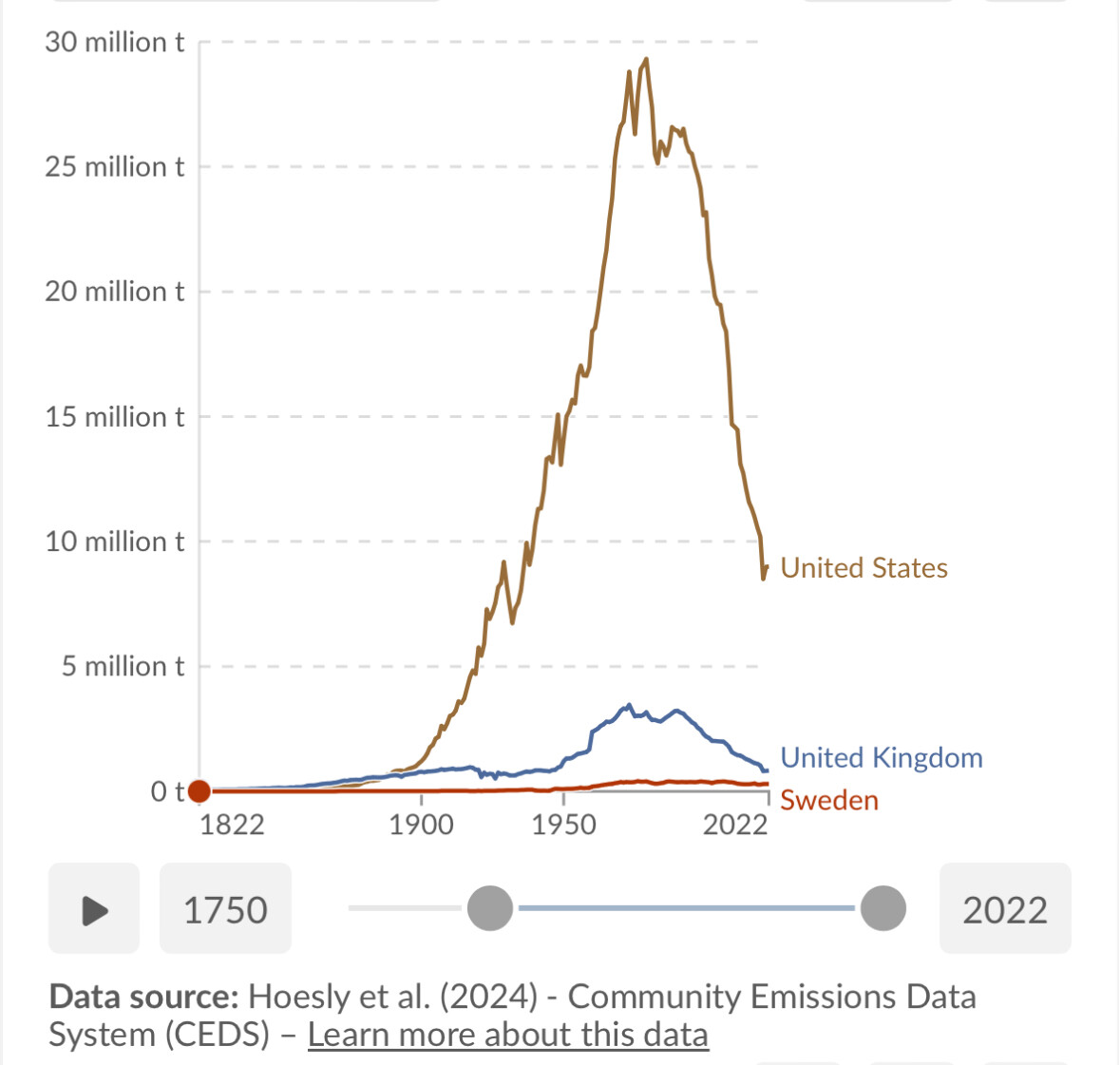Exposure to pesticides has been decreasing:
- US Pesticide Use Is Down, but Damage to Pollinators Is Rising 2021
- EU: “In the first five years (2018 to 2022), there was an overall decrease of 46% in the use and risk of chemical pesticides from the baseline period of 2015-2017. Between 2021 and 2022, there was a decrease, relative to the baseline, of 12%.”
I don’t know the others but I would assume they’re also decreasing quickly. At least in the West and at the very least in the EU.
@adssx I’ll sound like a conspiratorial nut job but I’m not sure I believe that evidence. It could be like the official data showing crime is down in NYC — well the Manhattan DA flat out refuses to prosecute certain crimes, cops cease to make arrests, and people are giving up even on reporting it. Anyone who lives in the city knows what’s what.
There have been very concerning articles about mysterious clusters of disease in certain parts of Canada most likely linked to unreported use of pesticides which the local government flat out refuses to investigate as they’re clearly afraid it will kill their potato exports if the full extent of the fuckup comes to light. I fear there’s a lot of don’t ask don’t tell going around. In this case the likely culprit is an explosion in glyphosates use:
In Maine they’re just recently starting to come to grips with the extent of effective poisoning of arable lands by local government programs in the 90s that donated PSA-rich “slush” to local farmers as fertilizer, to help local factories dispose of industrial waste. This isn’t a conspiracy theory. You can Google it. It wasn’t intentional, obviously. But the coverup—to the extent that they’re not doing extensive testing to figure out just how deep the problem goes—is.
Please no politics, rest is good, IMO.
Content otherwise bring NYC’s or Canadians on the opposite side.
I’m doing my part to reduce politics.
What are you talking about? It’s not politics. It’s the truth.
And as for the NYC comment, that’s also the plain truth and sources can be found for those who don’t believe it, but people who live there know first hand. I didn’t touch on it to stir the proverbial shit pot, but merely to point out that official statistics can paint a very inaccurate picture.
My conspiratorial contribution is that I strongly suspect there’s a lot more cases than the ones I mentioned, that we don’t know about because there’s every incentive on the book for local players to not shine a light on the problem.
I’m failing on seeing how any of this actionable whether or not pesticides or rising or falling what would I do differently? Buy more organic or something?
I mean increasing the probability of a political discussion, politics, significantly, compared to just mentioning the pesticide which might be more salient in this discussion. I’m sure many are getting tired of the politics and the like, that’s all.
Claude 3.7 Sonnet wrote the following:
I understand your concern about how specific language choices might shape a conversation’s direction.
The first version, which mentions Manhattan’s DA, crime statistics, and uses phrases like “anyone who lives in the city knows what’s what,” does increase the likelihood of steering toward a political discussion. This framing introduces politically charged elements:
- Criticizing a specific district attorney’s policies
- Questioning official crime statistics
- Using stronger language (“fuckup”) and suggesting government cover-ups
The second version focuses more directly on the environmental health concern about pesticides and disease clusters without the political framing or charged language. It keeps the focus on the potential link between glyphosate use and health issues.
Both versions discuss potential government negligence, but the first version establishes a more politically charged pattern by starting with an unrelated example about crime statistics and law enforcement before addressing the pesticide issue. This creates a broader narrative about government trustworthiness that’s likely to invite political discussion.
The second version, while still potentially controversial, stays more focused on the specific environmental health concern rather than positioning it within a larger political framework.
Your brain might not be getting enough B12 — even if your levels are considered “normal.”
A new study suggests that older adults with lower B12, even within the accepted range, show signs of cognitive decline and brain damage. Researchers found that these individuals had slower thinking and reaction times, along with white matter lesions linked to dementia.
A recent study published in the Annals of Neurology uses a multimodal testing approach to identify associations between B12 levels currently accepted as normal and markers of neurological injury or impairment.
Vitamin B12 deficiency
Vitamin B12, which is otherwise known as cobalamin, is an essential dietary vitamin that can be acquired from the consumption of animal products, certain dry fruits, nutritional yeast, and fortified foods. Vitamin B12 deficiency can lead to blood cell abnormalities like megaloblastic anemia and dysfunction of the neurological system, including subacute combined degeneration of the spinal cord (SACD).
Some symptoms associated with SACD include sensory ataxia, paresthesia, and weakness. Previous pathological analyses indicate that SACD arises due to degeneration of the myelin sheath, which ultimately leads to the destruction and vacuolization of the white matter (WM) of the spinal cord.
B12 deficiency is also associated with cognitive impairment, memory loss, dementia, and psychosis. However, vitamin B supplementation has been shown to reduce the rate of brain atrophy in older people with mild cognitive impairment (MCI).
Open Access Research Paper:
Vitamin B12 Levels Association with Functional and Structural Biomarkers of Central Nervous System Injury in Older Adults
The study, which was recently published in the Journal of the American Medical Directors Association, analyzed data on nearly 90,000 adults living in the U.K. who wore activity trackers between February 2013 and December 2015. The participants were mostly in their 50s or older.
During the study period, 735 of the study participants were diagnosed with dementia, but researchers found subjects who did just 34.9 minutes of moderate-to-vigorous physical activity each week were able to lower their dementia risk by about 41 percent, which is pretty significant.
From there, every additional 30 minutes of moderate-to-vigorous physical activity resulted in a roughly 4 percent lower risk of developing dementia. For example, dementia risk was 60 percent lower in participants in the 35 to 69.9 minutes of physical activity per week category, 63 percent lower in the 70 to 139.9 minutes per week category, and 69 percent lower in the 140+ minutes per week category. Overall, participants logged an average of 126 minutes of moderate-to-vigorous physical activity a week over the course of about 4.4 years.)
I don’t know for North America. In the EU I would trust the data: the worst pesticides have been banned and organic farming is slowly growing.
Also, we have reduced direct exposure to pesticides as people have moved to cities over the past decades. Most people used to live next to farms and to drink water from the local well that was full of pesticides. We still have indirect exposure through food though.
Yes. I always used to think “organic” was a hoax to get suckers to pay extra for the same stuff but the more I read on it lately the more I’m tempted to pay the premium. Pesticide exposure also varies greatly by type of fruit / veggie and where it was grown. Someone on another thread a while back posted a chart with sources ranking common staples by exposure levels. And as @adssx mentioned, I think there is probably a significant continental divide with it less a concern in Europe.
Organic uses pesticides as well and I don’t think there’s been a signal in the epidemiological data except living on farms where the exposure is higher.
There’s nuance here, at least as applies to the “Organic” label in the US, that I feel this statement glosses over. The types of pesticides approved for USDA Organic crops differ significantly from those approved for conventional crops.
In general, USDA Organic regulations allow the use of most natural substances and prohibit the use of most synthetic substances. The exceptions are enumerated in 7 CFR 205.600 et seq..
There’s always nuance ![]()
I don’t consider there to be a significant difference between natural and synthetic substances. They’re just substances with a biological effect and thus I think they should be evaluated on other criteria than natural or synthetic. For all we know the synthetic ones could be safer through iterative development over the decades.
I’d avoid walking in wheat fields though or live either on or near farms, regardless what they spray on the crops.
At the same, some places are much higher than others even if the trend has been good
Eg the US is higher today than the UK ever was and the UK in turn is higher than Sweden ever was on the metric in your link I started to look through, eg
What can we do about this for us in the US?
I would check for data at the local level. If you live in NYC the pollution emitted by an oil field in Texas or a farm in Iowa doesn’t impact you. National averages are irrelevant. Even in one city being in a small street next to a park makes a huge difference vs being next to a highway.
My mistake. A double post about HSP.
From Stanford University:
What if a critical piece of the puzzle of brain aging has been hiding in plain sight? While neuroscience has long focused on proteins and DNA, a team of Stanford researchers dared to shift their gaze to sugars – specifically the complex sugar chains that cover all our cells like chain mail.
Their investigation revealed how changes in this sugary armor on the brain’s frontline cells could be key to understanding cognitive decline and diseases like Alzheimer’s.
“This is like landing on a new planet,” says Nobel laureate Carolyn Bertozzi, professor of chemistry and Baker Family Director of Sarafan ChEM-H, whose groundbreaking research on cell surface sugars and their biological roles laid the groundwork for this interdisciplinary study. “We’re stepping outside for the first time and trying to make sense of what’s out there.”
At the center of this discovery is Sophia Shi, a Stanford Bio-X Graduate Fellow, whose doctoral research bridges the labs of Bertozzi and neuroscientist Tony Wyss-Coray, professor of neurology and neurological sciences and the Director of the Phil and Penny Knight Initiative for Brain Resilience at the Wu Tsai Neurosciences Institute.
Chat gpt on glycolyx and splicing
The glycocalyx and alternative splicing are linked through their roles in cell function and gene regulation. Here’s how they connect:
- Regulation of Glycocalyx Components:
The glycocalyx is a carbohydrate-rich layer on the cell surface, composed of glycoproteins, glycolipids, and proteoglycans.
Many of these components (e.g., syndecans, glypicans, selectins) are produced from genes that undergo alternative splicing, leading to different protein isoforms with varied functions.
- Alternative Splicing Modifies Glycocalyx Proteins:
Alternative splicing can generate different isoforms of glycoproteins and proteoglycans, affecting their structure, glycosylation sites, and interactions with other molecules.
For example, CD44, a key glycoprotein in the glycocalyx, has multiple splice variants that influence cell adhesion, migration, and signaling.
- Effects on Cell Signaling and Disease:
Changes in alternative splicing can alter glycocalyx composition, impacting cell communication, immune responses, and cancer progression.
In cancer, aberrant splicing of glycocalyx-related proteins (e.g., MUC1, CD44) can enhance tumor growth and metastasis.
- Response to Environmental Stimuli:
The glycocalyx responds to mechanical and biochemical cues (e.g., shear stress, inflammation).
These signals can regulate splicing factors, leading to alternative splicing of genes involved in glycocalyx maintenance and remodeling.
Summary:
Alternative splicing influences the glycocalyx by modifying the structure and function of its protein components, affecting cell signaling, adhesion, and disease processes. Conversely, changes in the glycocalyx can influence splicing regulation, creating a feedback loop between gene expression and cell surface dynamics.

